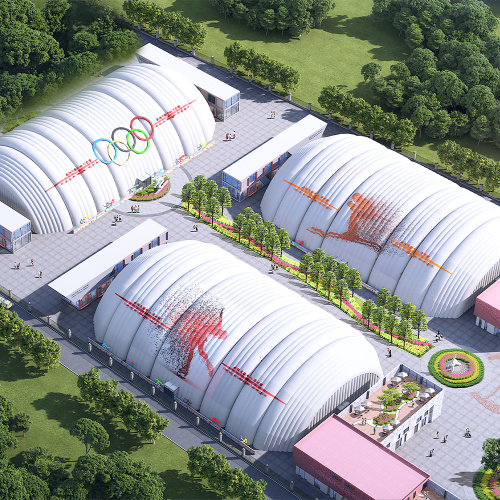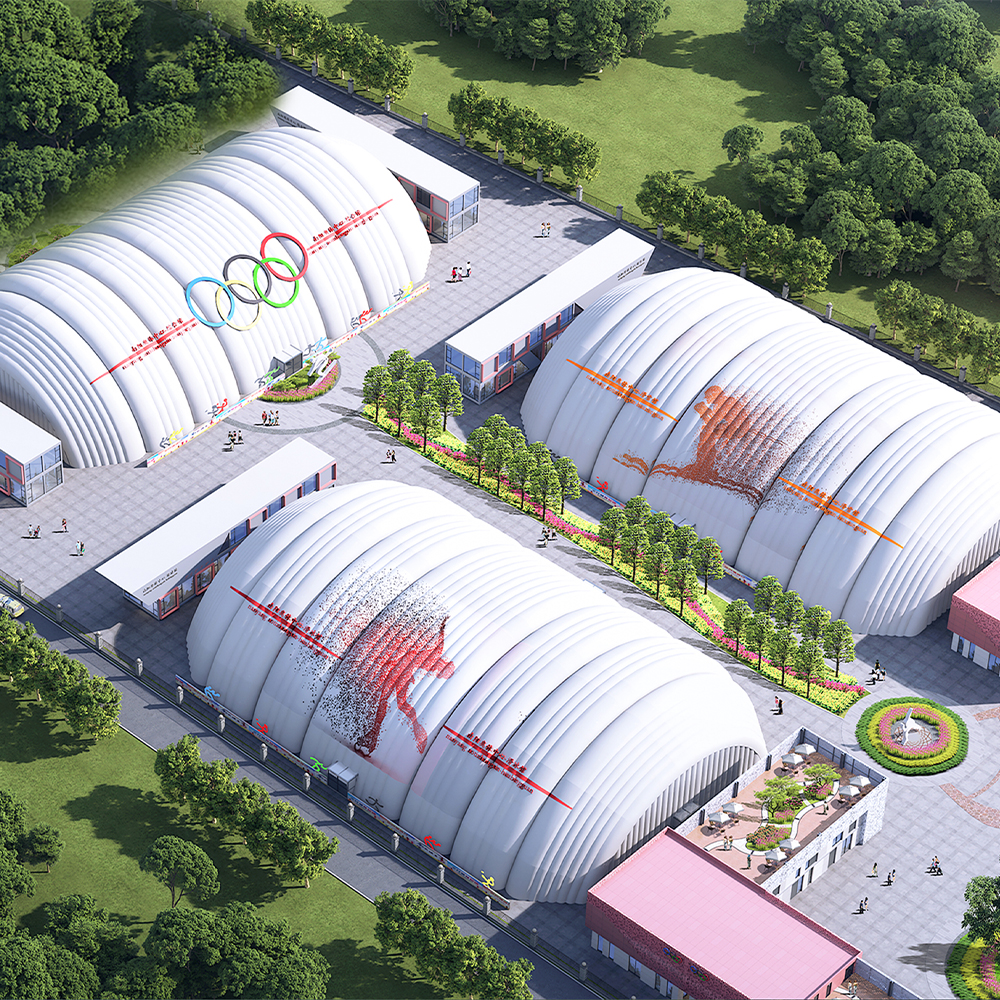The inflatable membrane structure utilizes a membrane-belt anchoring system to ensure stability and functionality under external and internal forces.
The inflatable tubes are the most important structural element of the structure. They consist of a lightweight membrane filled with air via a blower system. The (low) internal pressure in the tubes ensures the required rigidity of the structure while maintaining a very low weight.
This pressure is regulated by an automatic control system that increases the stiffness of the tubes at peak wind speeds depending on the current wind strength.
The stability of the tubes is ensured by an innovative belt mesh, designed as a cage-like structure around the inflatable membrane. It fulfills two main functions: limiting the deformation of the tubes and transferring the internal forces to the anchoring points.
The belt mesh is interconnected to form a network, so that the forces acting on the membrane are transferred in the form of axial forces via the belt mesh to the anchoring points.
Types of Inflatable Structures:
Air-Supported Structures – Single-layer membranes held up by slight air pressure (e.g., sports domes, temporary shelters).
Air-Inflated Structures – Double-walled inflatable beams or arches (e.g., bounce houses, inflatable bridges).
Hybrid Structures – Combine inflatable elements with rigid supports (e.g., some aerospace habitats).
High-Pressure Inflatable Tubes – Used in aerospace (expandable space modules) or military applications.
Lightweight & Portable – Easy to transport and deploy.
Quick Assembly – Can be inflated/deflated rapidly.
Cost-Effective – Often cheaper than rigid structures.
Temporary Use – Ideal for events, disaster relief, and military operations.
Customizable – Can be designed in various shapes and sizes.








